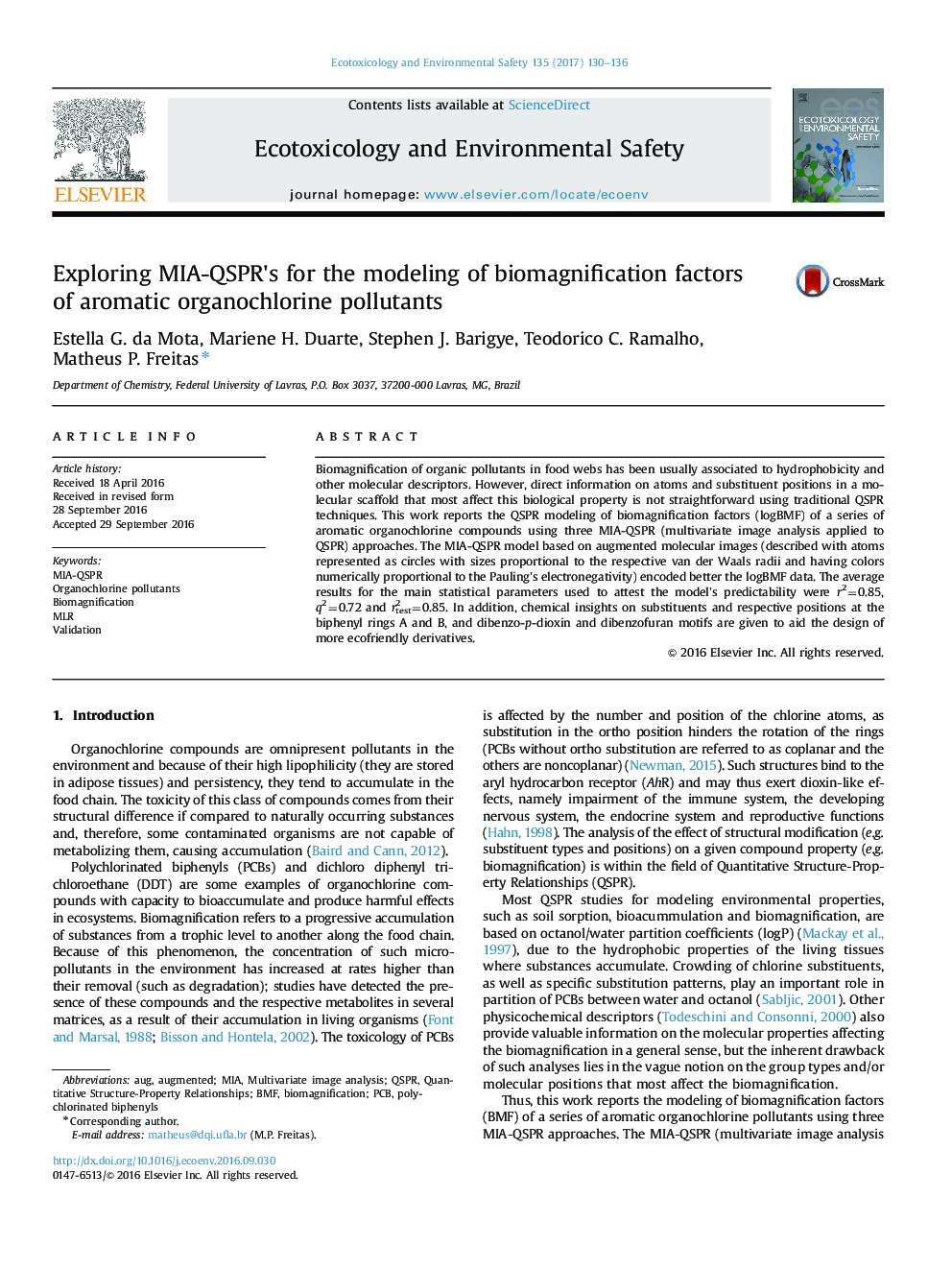| Article ID | Journal | Published Year | Pages | File Type |
|---|---|---|---|---|
| 4418988 | Ecotoxicology and Environmental Safety | 2017 | 7 Pages |
•The biomagnification factors of 40 organochlorine compounds were modeled.•The MIA-QSPR model based on augmented images was predictive and interpretative.•Number and position of chlorine atoms play specific roles on biomagnification.
Biomagnification of organic pollutants in food webs has been usually associated to hydrophobicity and other molecular descriptors. However, direct information on atoms and substituent positions in a molecular scaffold that most affect this biological property is not straightforward using traditional QSPR techniques. This work reports the QSPR modeling of biomagnification factors (logBMF) of a series of aromatic organochlorine compounds using three MIA-QSPR (multivariate image analysis applied to QSPR) approaches. The MIA-QSPR model based on augmented molecular images (described with atoms represented as circles with sizes proportional to the respective van der Waals radii and having colors numerically proportional to the Pauling's electronegativity) encoded better the logBMF data. The average results for the main statistical parameters used to attest the model's predictability were r2=0.85, q2=0.72 and r2test=0.85. In addition, chemical insights on substituents and respective positions at the biphenyl rings A and B, and dibenzo-p-dioxin and dibenzofuran motifs are given to aid the design of more ecofriendly derivatives.
